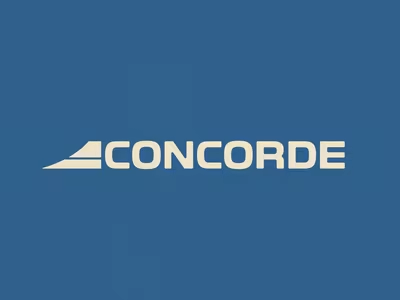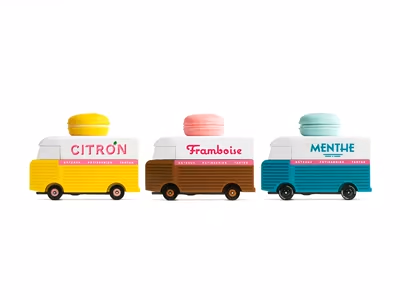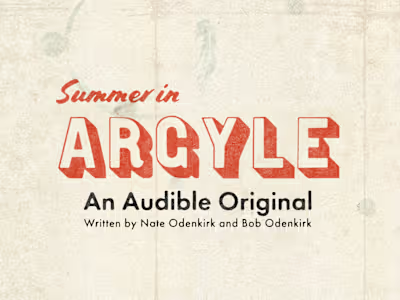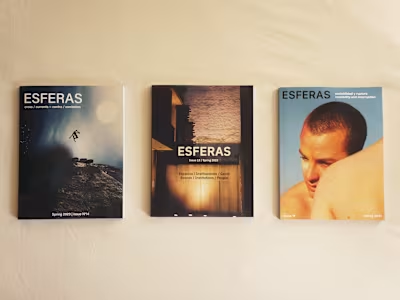Airmaster Toy Airplane
Like this project
Posted Sep 6, 2024
Design, modeling, and rendering of a toy plane with classic lines.
Likes
0
Views
283
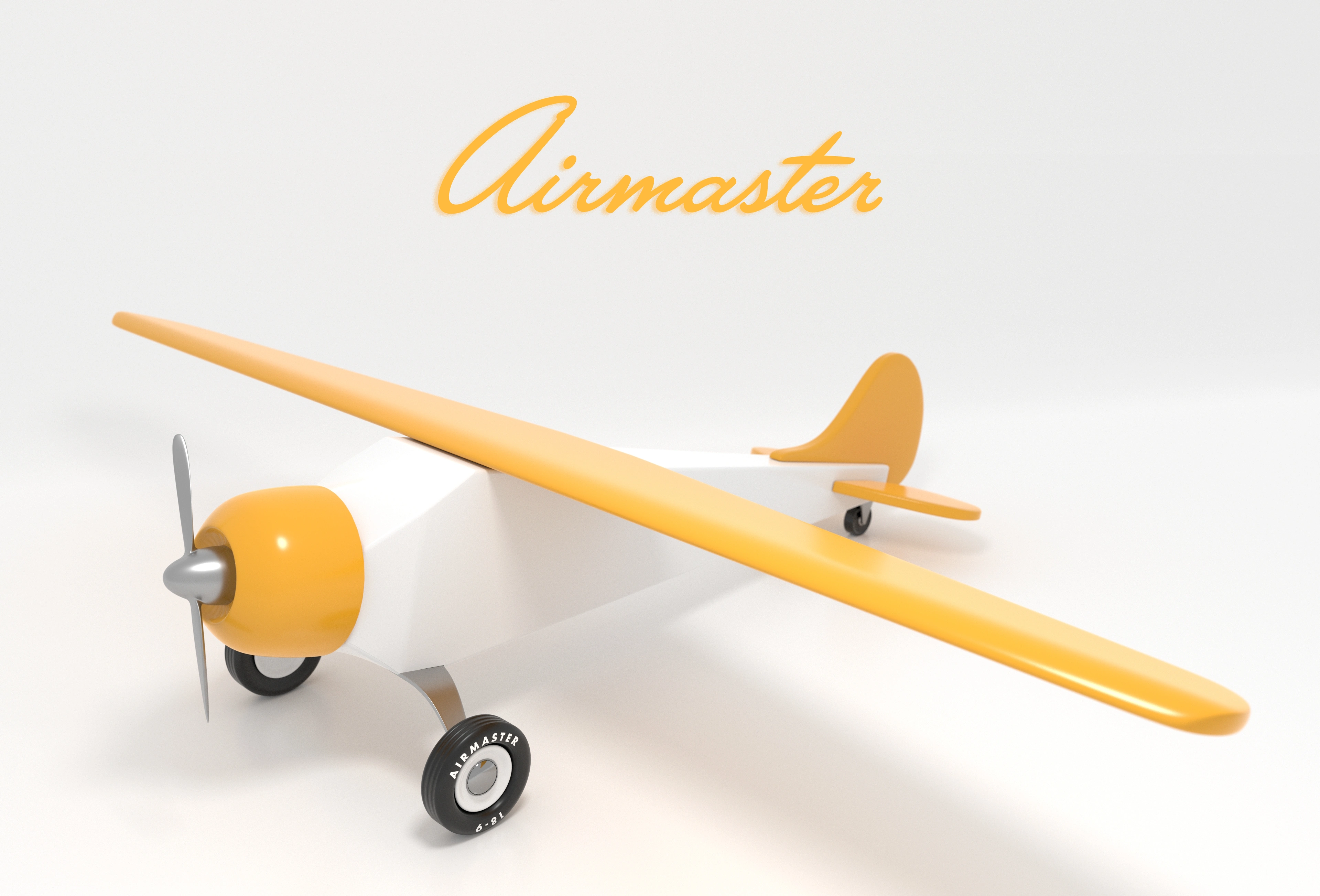
Inspiration
This project was inspired by a visit to the Museum of Modern Art's Design Store in New York City. On display was a wooden toy car that stunned me. The classic lines and flawless craftsmanship of these toys were courtesy of NY-based Candylab Toys. I was immediately hooked.
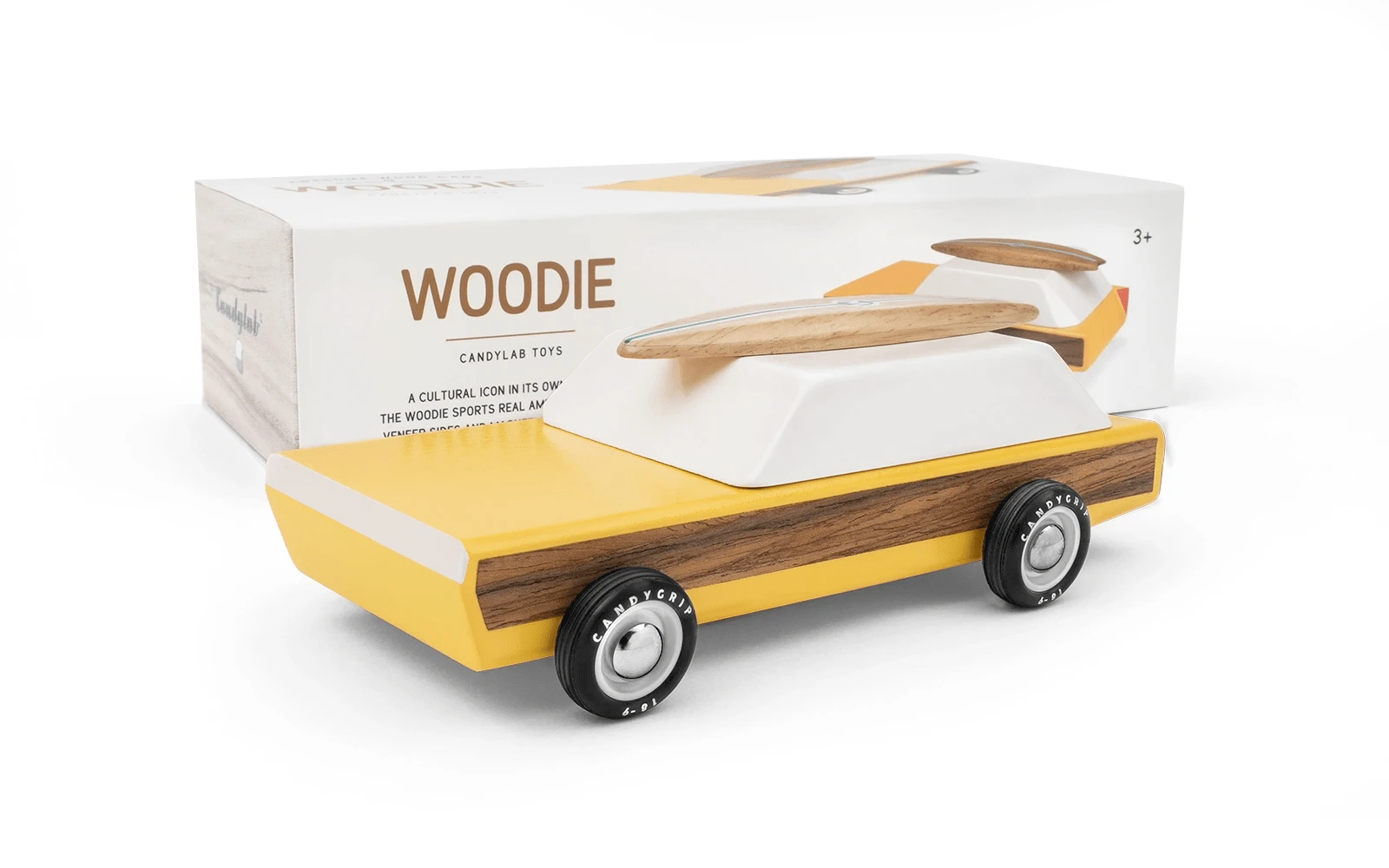
Candylab's "Woodie" wagon with a magnetic surfboard attached to the roof... too cool.
Design Process
It was after seeing this that I was inspired to design something personal to me using this same design style of clean, reduced forms and timeless styling. As a pilot and someone with a lifelong love of everything aviation, my subject of choice was the Cessna 195, a small aircraft produced in the late-1940s. In my mind, the lines of this stunning aircraft lent themselves beautifully to be reinterpreted in Candylabs' simplified style.
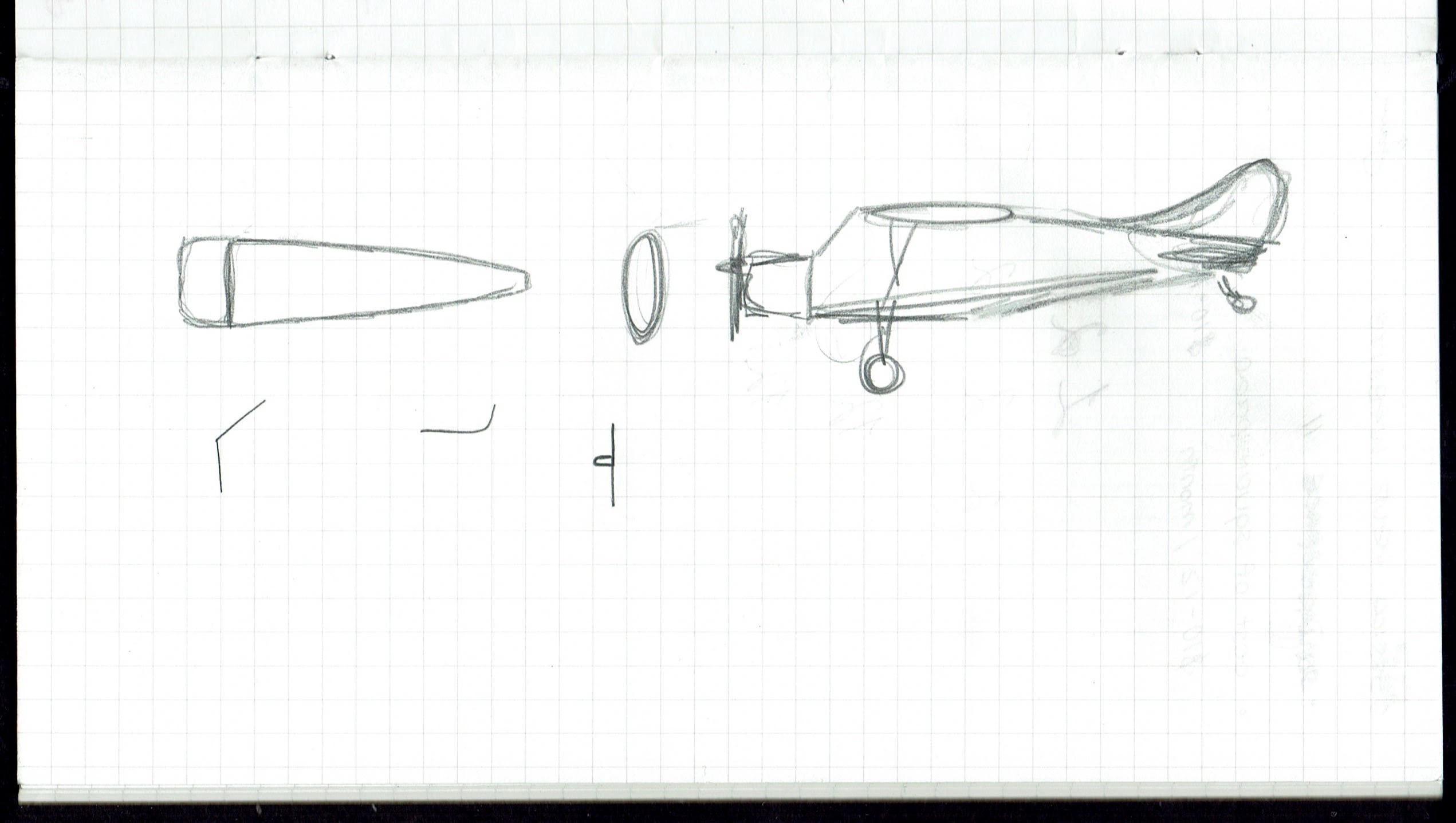
My first, hastily-drawn sketch made while standing on the subway in NYC.
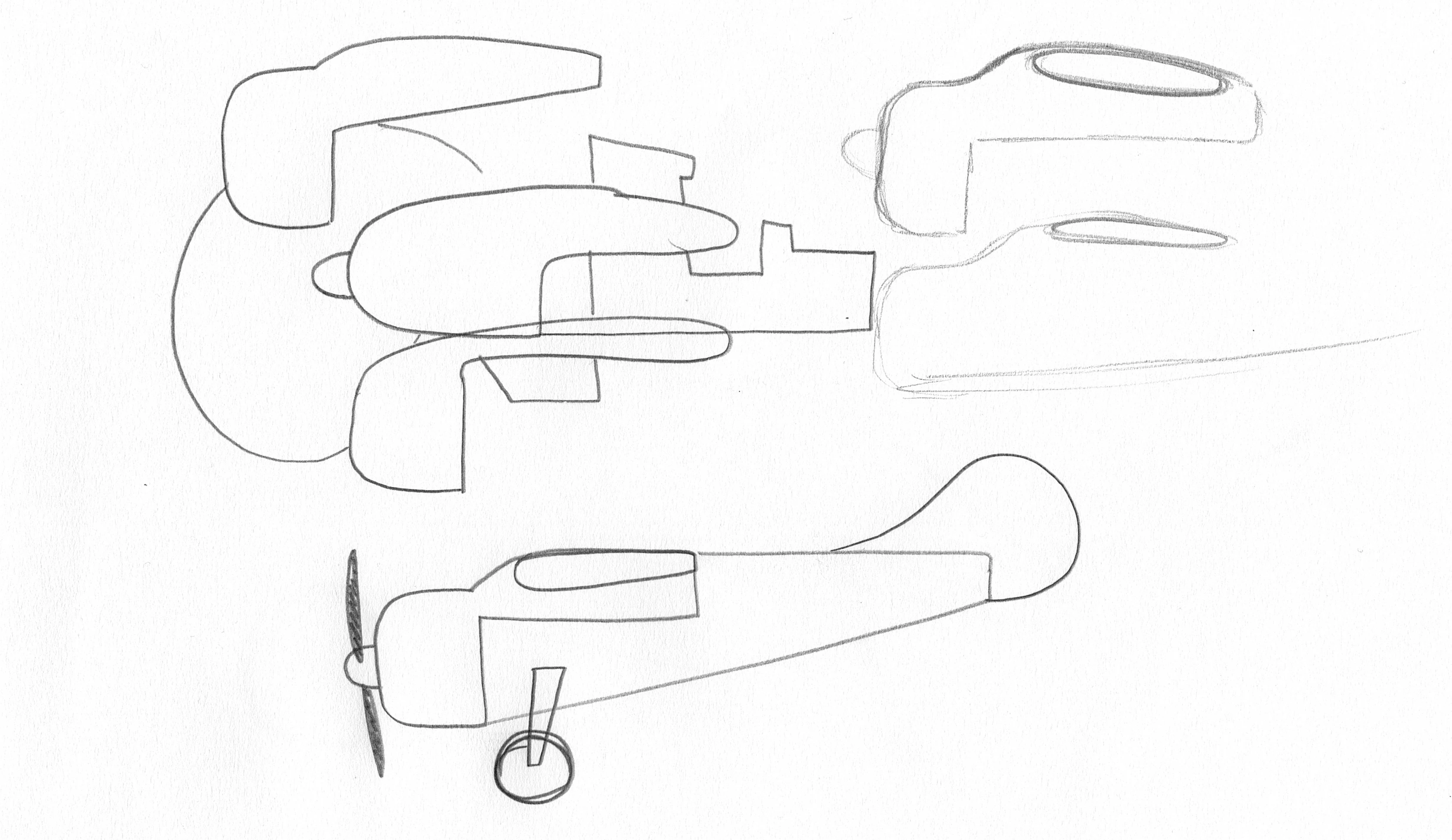
Early attempts to divide the model into two more simplified sections were later discarded.
Continually reducing the complex contours of the 195 was key in my design process. Constant reminders that I was not making a perfect replica but a stylized interpretation were needed, and stylistic references from Candylab's existing models were set alongside numerous reference images of the real aircraft. Hand drawing, paper mockups, and obviously 3D modeling were crucial in this evolution.
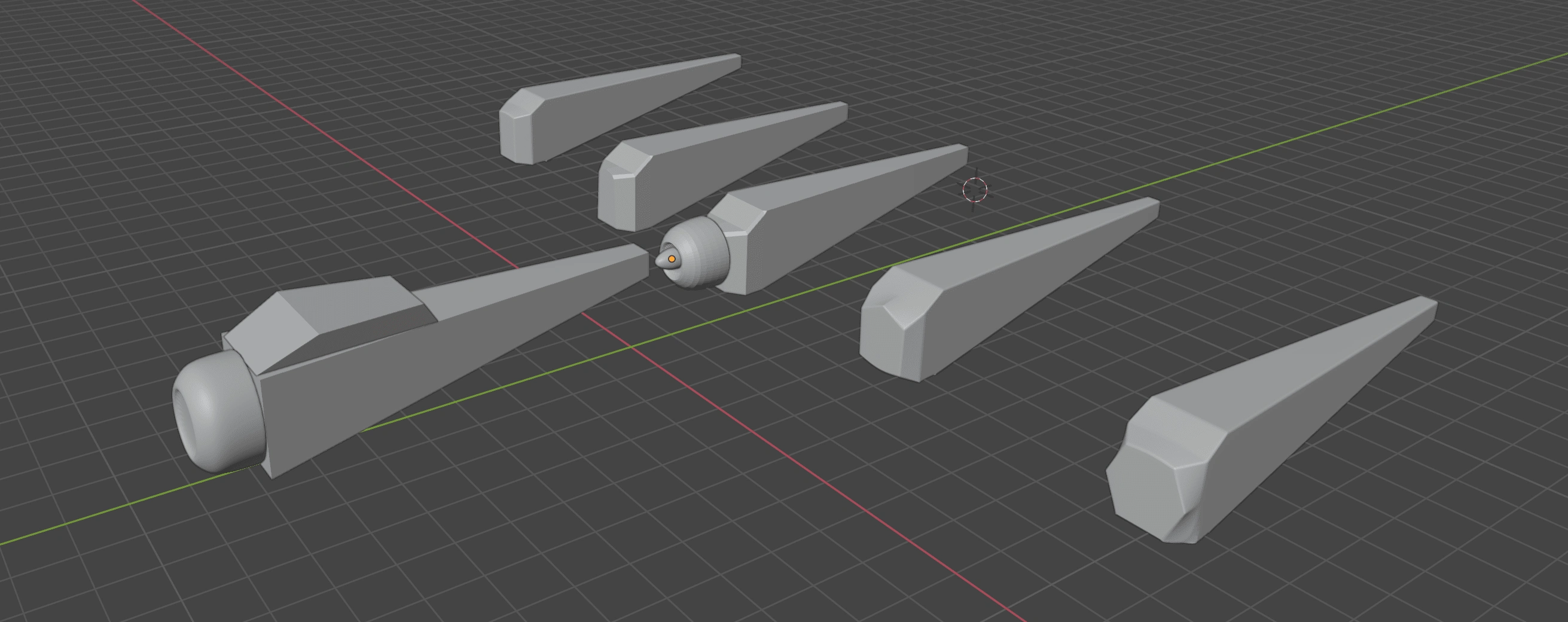
'The graveyard of forgotten fuselages...'
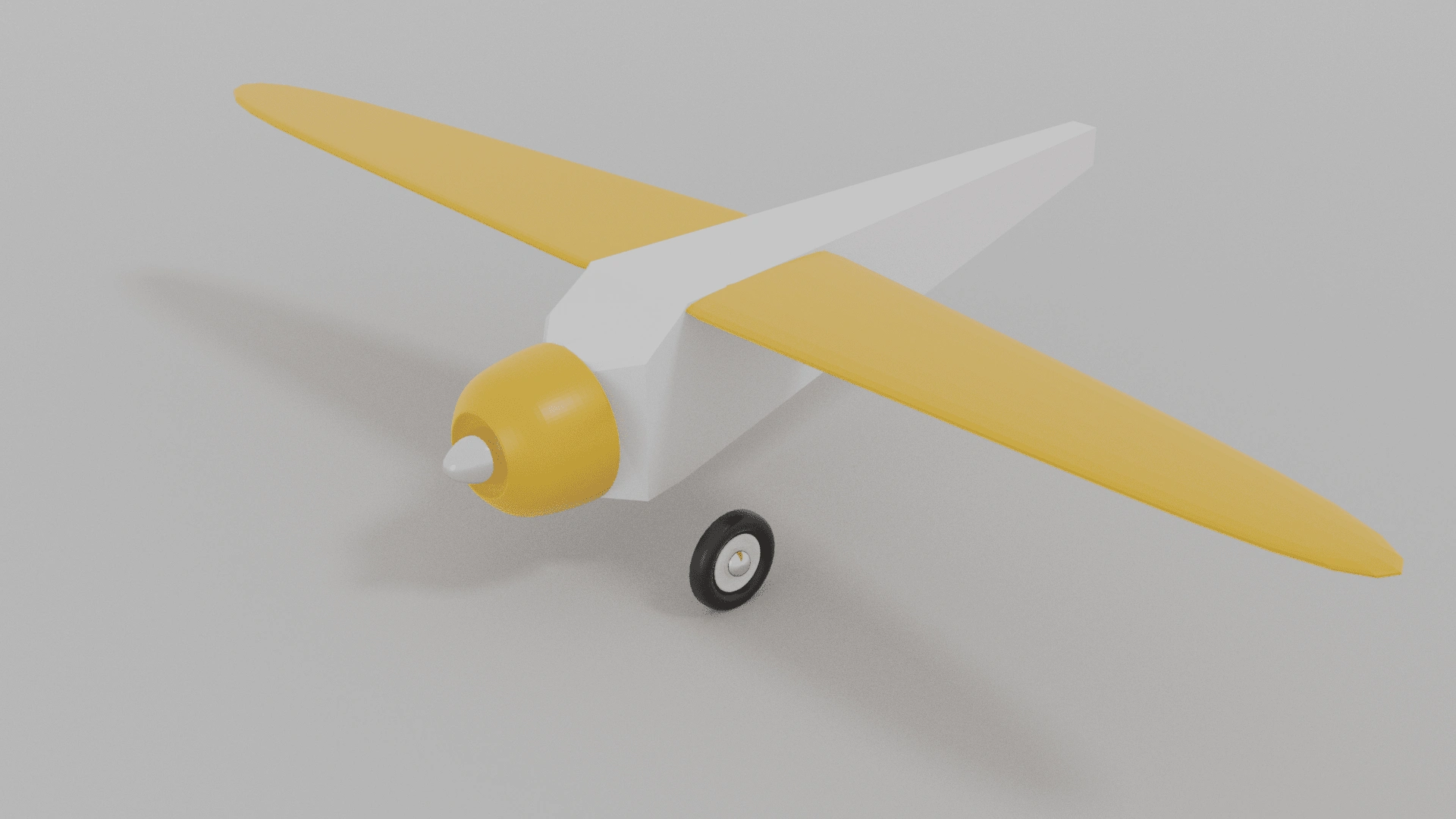
First rendering shows an over-complicated wing shape and rough forward fuselage.
One example of this stylization is the joint between the wing and the body of the airplane. While the full-sized counterpart has a wing that joins flush, as seen in the rendering above, I realized that a single piece that sits atop the fuselage and creates a crisp shadow in its crease would better match the style in mind.
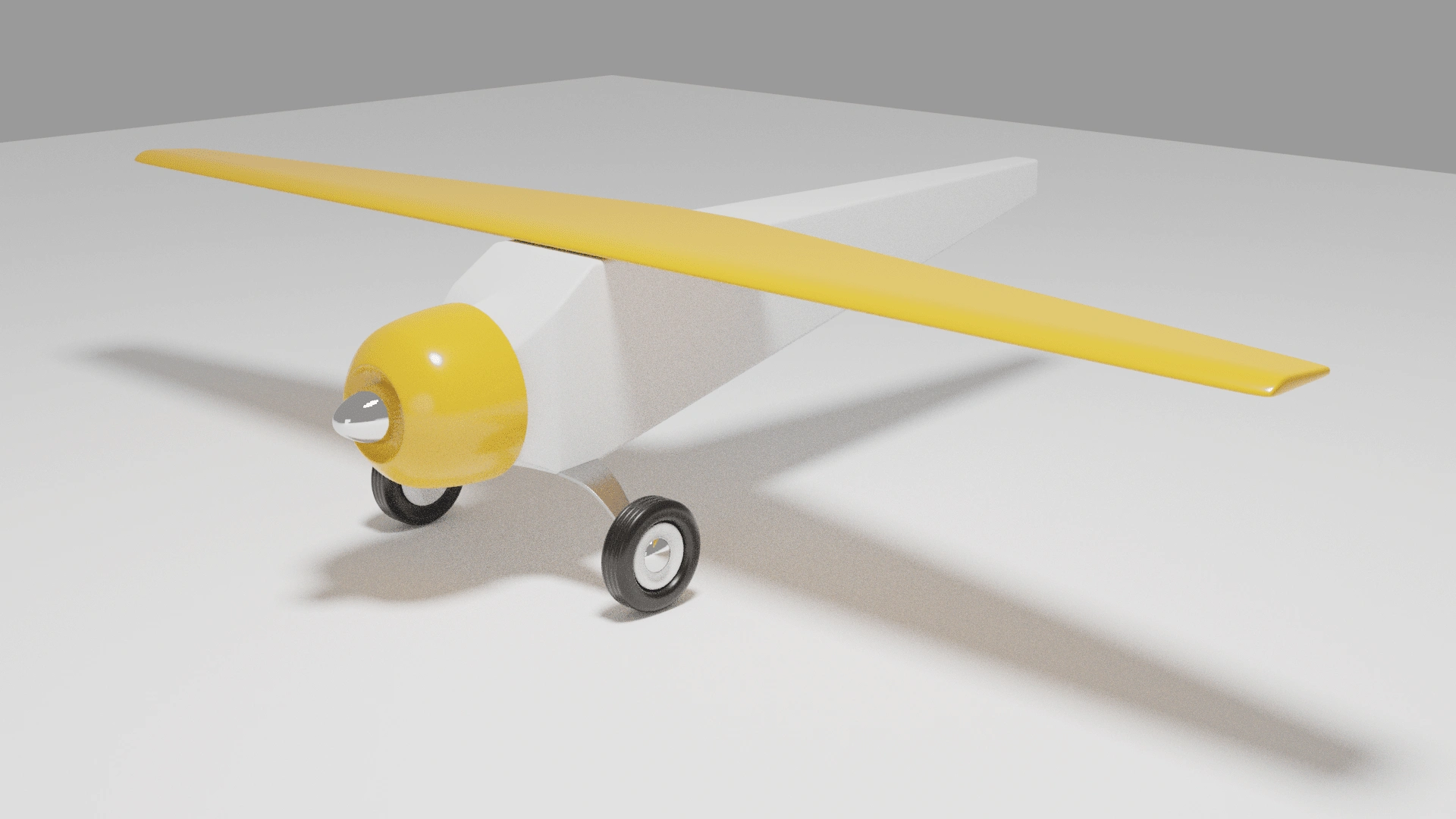
A refined nose and simplified wing rest on proper struts, wheels, and tires.
At this point, a few aspects of the design began to fall into harmony. I had been most hung up on the connection point between the large, cylindrical engine and the rectangular body of the airplane. Without adding excessive complex geometry, I divided and tapered the fuselage and made a joint that seemed cohesive with the style I was attempting to emulate. From there I proceeded to model the tail and elevator and texture paint the tires to match their Candylab equivalent.
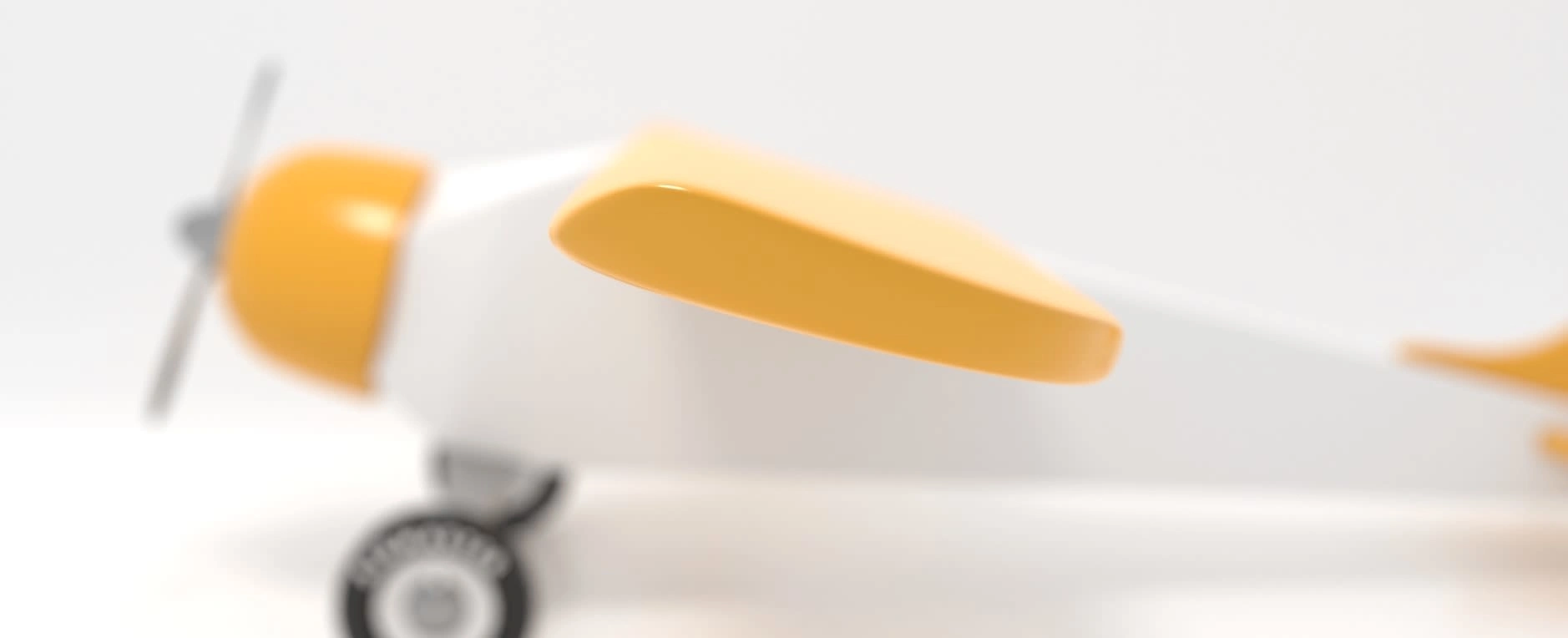
The airfoil of the wing is visible clearly when viewed from the side.
As all real aircraft need a subtle arc of the top of the wing in order to generate lift and fly, I thought the Airmaster deserved the same. Although it is flightless, I felt reducing the wing to harsh right angles would be doing a disservice to those looking for a small learning opportunity. With my modeling complete, I went on to render out my final images.
Final Renders
My final renders were set alongside each other with a period-inspired typeface to go along with it.
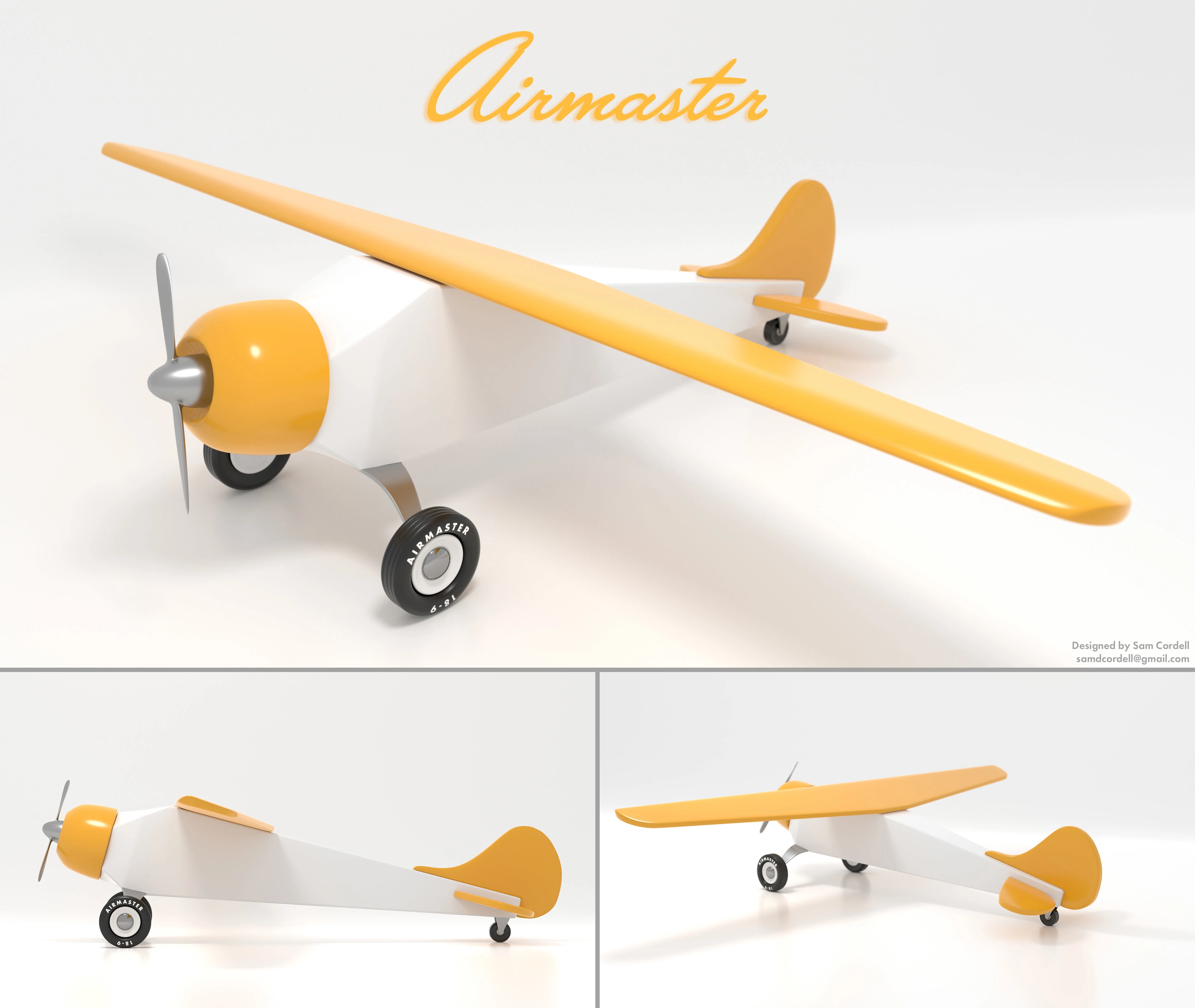
This model captures so much of what I love about aviation, and served as a very challenging and enjoyable design exercise. I wish I had an Airmaster growing up, just about as much as I would've liked my very own Candylab car. Now, I'm heading to the 3D printer to take it off the screen and into the real world...




